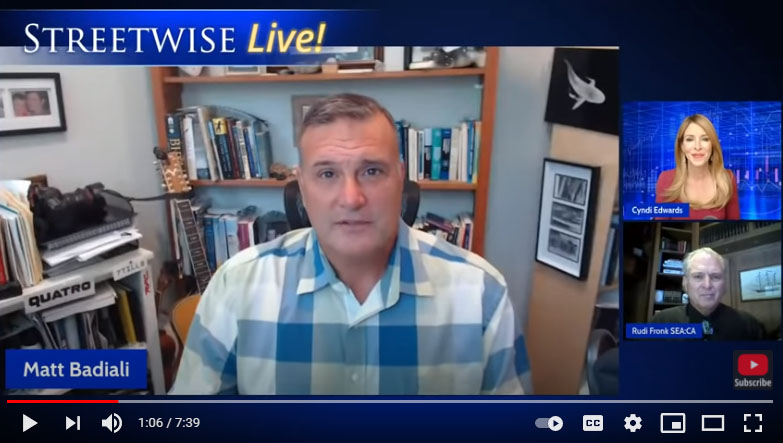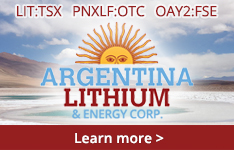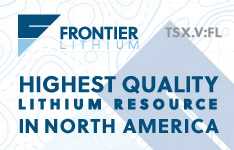The recent jump in the Consumer Price Index (CPI) generated a lot of attention, with consumers noticing a wide range of price increases while the Federal Reserve and its apologists insist it is only "transitory." This in itself is rather peculiar, given that the Fed has been seeking higher inflation for sometime: Should they not have taken a victory lap?
The arguments for April's CPI jump being short-lived are two: One, that last April's was abnormally low, given it was at the start of lockdown in many states, so the year-to-year comparison would inevitably be higher (the "base effect"); and two, that with many states now opening up, there is pent-up demand not yet met by increased demand.
Are higher prices only "transitory?"
The first is, in theory, absolutely true, but in the case of CPI numbers patently false, given that the absolute CPI level is well above (over 4%) that of several months before any COVID lockdowns. The second has more validity, but it may be a few months before we see if it is, in fact, true in reality. Different conditions are affecting different sectors and regions differently. Pent-up demand is evidenced in, for example, hotel room rates, while restaurants, for example, are slower to come back to full re-opening (whether because of lingering capacity restrictions or that many simply went out of business over the past year).
But commodity input prices are up across the board, more than the Producer Price Index, which, in turn, is up more than consumer prices, suggesting that there are higher prices ahead as these earlier-stage prices work their way through the supply chain.
Fed policy suggests inflation will move higher
One major factor suggests that inflation will be long-lasting, and that is Federal Reserve policy. The money supply is up at a 21% rate in the last three months—higher than the six-month rate—and nothing suggests that will change any time soon. The Biden Administration has various spending plans—COVID relief, infrastructure, fighting racism etc.—totaling $10–12 trillion. Much of this additional spending will come from the "Magical Money Tree," as the Federal Reserve indicates its willingness to monetize the debt. At the same time, there is no indication that the Fed will tighten meaningfully to fight the inflation it both wants and believes is only temporary. On the contrary, many Fed members have stated flatly that the Fed will not be too hasty fighting a temporary increases in prices.
Inflation is positive for gold, but even more positive is an inflation that the Fed refuses to acknowledge and will not fight.
Here comes Basel
Another major factor potentially contributing to higher gold prices the last few months has been buying from banks ahead of the implementation of the Basel III rules. We do not need to go into all the details of the new Net Stable Funding Requirement (NSFR) rules under Basel III, which come into force in Europe and the U.S. at the end of June (and the U.K. Jan. 1). In essence, the rules make changes to what assets are included in both the asset and liability side of the ledger. Physical gold moves to a Tier 1 asset, counted at 100% of value in calculating reserves. In and of itself, that would be a positive since banks could hold gold without a disadvantage over Treasuries and other assets.
Paper gold, as well as unallocated gold, now have a zero value, meaning that they cannot be used as a source of bank funding. Thus, the difference in valuation for physical and paper gold has been widened substantially, giving banks an incentive to buy physical. (Moving unallocated gold to allocated does not help the banks, since allocated gold is not a bank asset.)
Banks have likely been buying
The implementation of these rules is bullish for gold, though many commentators have, in my view, wildly exaggerated the potential impact. Banks will have other ways to come into compliance than converting all their paper gold to physical. Most banks have excess liquidity in any event, and they can increase their acceptable funding in other ways. But there will be some buying, and in all likelihood already has been.
Any bank buying ahead of the rules is time sensitive but not price sensitive, which could help explain why gold has moved up for three months with no meaningful pullback; there has been no more than two consecutive down days for gold over that period.
Since banks have until the end of the year to come into full compliance, this buying could continue, and once this bullion is purchased, it will not be readily sold. So this is a bullish factor, even if not quite as wildly bullish as some commentators are suggesting.
London's bullion forward market is at risk
The changes have a particular impact of the futures market, particularly the banks that are members of the London Billion Market Association (LBMA). Other members of the LBMA are producers and refiners, who want to hedge positions. At present, forward buy contracts are offset by forward sell contracts, and bullion banks have positions on both sides, netting out. The new rules require one side of the balance sheet to have contracts valued with a 15% discount, but excluded from the other side of the balance sheet.
It is unrealistic for bullion banks to buy physical to cover their contracts. Theoretically, this could stop most trading of forwards in bullion, leaving only a handful of large commercial banks. At the minimum, it would drastically shrink the market, including the swaps done with the COMEX futures market. The LBMA is seeking to be excluded from the new requirements. There is a possibility that the U.K. may grant that exemption, though the rules for other banks will not be extended again.
Nevada continues to hold promise for Barrick and Newmont
Barrick Gold Corp. (ABX:TSX; GOLD:NYSE, US$23.46) said it expects Nevada Gold Mines (NGM), which it owns jointly with Newmont Corp. (NEM:NYSE, 71.45) 61.5%/38.5% and of which it is the operator, to produce around 3.5 million ounces annually for the next 10 years. This year and next, production is expected to decline, followed by a boost in 2023 and fairly stable projection after that.
The Nevada operations consist of 10 underground and 12 open-pit mines, and 18 processing facilities. Reserves are 45million ounces, and NGM expects to replace reserves over the 10-year period. Nevada still has significant exploration potential, both in near-term extensions at North Leeville, Goldrush and Turquoise Ridge, longer-term exploration projects. On a standalone basis, NGM would be the third largest gold miner in the world, after Barrick and Newmont themselves. It represents 31% of the net asset value (NAV) for Barrick, 19% for Newmont. Barrick is a buy; Newmont a hold.
Implementation of Osisko's strategy moves stock
Osisko Gold Royalties Ltd. (OR:TSX; OR:NYSE, US$14.71) is on track to meet full-year guidance of around 80,000 ounces, with cash balance increasing to $119 million as of quarter end. (Cash at Osisko Development of around $186 million is consolidated on the balance sheet, but our number excludes that.) With several projects on which it holds royalties being advanced(Hermosa, by South 32, as well as Cariboo, San Antonio, and Windfall from other companies in the Osisko family), the company has a good pipeline.
New CEO Sandeep Singh is doing a fine job repositioning the company and explaining the strategy. Although he took over at a time when royalties were already expensive to acquire and they have become only more so, Osisko has the huge advantage of embedded royalties from Osisko Development, Mining, and O3. Some of these projects will take time, but they are all now being developed and financed separately. The ongoing large majority ownership of Osisko Development continues to hurt the stock, but the approach to reduce ownership has been well articulated, and the market has been responding as it is implemented. Already, OR's stake has been cut from 88% at initial public offering (IPO) a year ago to 75%.
After an almost 50% move since the beginning of March, the stock is no longer particularly undervalued on cash flow metrics, though at 0.8x NAV, and with a strong near- and medium-term growth profile, it remains attractive and we are definitely holding.
Fortuna recovers from acquisition selloff
Fortuna Silver Mines Inc. (FSM:NYSE; FVI:TSX; FVI:BVL; F4S:FSE, US$6.83) has rebounded nicely from the initial selloff following the announcement of its plan to buy Roxgold Inc. (ROXG:TSX), a West African producer (see Bulletin #773). The proxies have been mailed to shareholders. In addition to growing support for the transaction, as Fortuna explains the detail to shareholders, the company also had a good quarter, more than tripling its gold output as its new Argentinian mine ramps up. Silver output also increased, from a soft year-ago quarter.
Fortuna also announced some progress in the battle over disputed back royalties owed the Mexican Geological Service from the San Jose mine. The mines ministry ended its bid to cancel the concession, though the underlying dispute remains. With one of its three mines in Peru, we expect the stock to react negatively if the Marxist-oriented Castillo wins the presidential runoff, though he does not have sufficient control of the congress to push through his program without compromise. As we write, the outcome is not known. We are holding.
Midland resumes drilling at prospective Mythril
Midland Exploration Inc. (MD:TSX.V, 0.72) has resumed drilling on its large, 100%-owned Mythril project, focusing on newly identified copper-gold targets. Midland discovered Mythril by prospecting in late 2018. The new targets have been developed aftertime was spent better understanding the complex geology.
Midland has many prospective projects on the go, including a strategic alliance with BHP Billiton Ltd. (BHP:NYSE; BHPLF:OTCPK) seeking copper and nickel. The alliance is reportedly going well, with a methodical approach initially securing a large land position and identifying interesting prospects within the position. Midland is well financed, with about $12 million cash. There are plans for about $10 million of exploration spending this year, $4.7 million from Midland and the balance from partners. The stock has been soft with the market waiting for good results. It is a very strong buy at this level.
Orogen continues to deal properties as cash flow nears
Orogen Royalties Inc. (OGN:TSX.V, 0.35) continues to deal projects, with optioning out one more Nevada project (to a private company), while acquiring by staking the Onjo copper-gold porphyry in British Columbia. These two transactions illustrate the strategy of optioning existing properties to get work done in exchange for royalties—the agreement has a minimum drill commitment, including in the first year—while continuing to generate new properties. Ermitano remains on track for production in early 2022 to become Orogen's first cash-flowing project. Orogen is a buy.
More progress at Lara
Lara Exploration Ltd. (LRA:TSX.V, 0.69) continues to advance projects with partners and independently. Recently it announced that partner Hochschild returned more good results from the Corina project in southern Peru. Another 2,000 meters of drilling is planned.
Hochschild Mining Plc (HOC:LSE) has an option on the project in return for a royalty. Lara continues to work in a low-key methodical manner, but several projects are being advanced. The stock is a strong buy for patient investors.
Azucar continues to advance large El Cobre project
Azucar Minerals Ltd. (AMZ:TSX.V; AXDDF:OTXQX, US$0.14) has begun of new drill program at the El Cobre copper-gold porphyry project in Mexico. El Cobre is a large property which has seen extensive work over the years. Australia's Newcrest Mining Ltd. (NCM:ASX) acquired just under 20% of the company as a way of funding and gaining exposure to the project, and has maintained its share ownership through top-up investments. An initial resource estimate on the Norte Zone shows 1.2 million ounces gold equivalent indicated. The new drill program plans one hole in each of three new zones. The company is certainly not expensive, with a market cap of around CA$10 million, though it takes money to explore and develop the large property. We are holding.
We are also holding associated company Almadex Minerals Ltd. (DEX:TSX.V, 0.245); both companies were ultimately spun out from Almaden Minerals Ltd. (AMM:TSX; AAU:NYSE). Almadex holds royalties of both El Cobre and on Almaden's stalled Ixtaca, as well as a portfolio of properties in British Columbia, Nevada, and Mexico, some of which it has optioned out to third parties. It anticipates drilling on several of its properties this year. It is well financed, and holds a gold loan to Almaden. Patient investors can accumulate for exposure to the group.
Upcoming Conferences
This coming week (June 10–12), I'll be in Orlando for the Money Show in-person conference, with three separate sessions (a class on gold investing; a debate on crypto; and a workshop on best places to invest now). And next month, July 21–24, is the FreedomFest conference, being held this year in South Dakota, with a range of speakers on economics, politics and more. I'll be participating in another crypto debate, as well as a session on Modern Monetary Theory and its ramifications. I'll also be participating in the virtual Natural Resource Symposium, July 15–17, hosted by Rick Rule, with leading mining companies and analysts.
The Things They Say
As Germany's 10-year bond declined, the yield went to a negative 0.12%. President of the Kansas City Federal Reserve Bank talked about the German yield being "relatively lofty." Even with the modifier, "lofty" is a peculiar choice of word for a negative yield. There is something very sad and troubling in London newspaper headlines proclaiming "Government to allow families to hug from next week."
What's good for the goose
Supreme Court Justice Neil Gorsuch, in his ruling against the government in a procedural immigration case, wrote that "words are how the law constrains power," arguing the law requires the government provide a single statement of the nature of the proceedings against him. Homeland Security lawyers argued it would put too much of a burden on the government to comply with the law's literal interpretation. Write Gorsuch: "If men must turn square corners when they deal with the government, it cannot be too much to expect the government to turn square corners when it deals with them."
Originally published June 6, 2021.
Adrian Day, London-born and a graduate of the London School of Economics, heads the money management firm Adrian Day Asset Management, where he manages discretionary accounts in both global and resource areas. Day is also sub-adviser to the EuroPacific Gold Fund (EPGFX). His latest book is "Investing in Resources: How to Profit from the Outsized Potential and Avoid the Risks."
[NLINSERT]Disclosure:
1) Adrian Day: I, or members of my immediate household or family, own securities of the following companies mentioned in this article: Lara Exploration, Midland Exploration, Newmont Corp., Fortuna Silver Mines, Barrick, Osisko Gold Royalties and Orogen Royalties. I personally am, or members of my immediate household or family are, paid by the following companies mentioned in this article: None. My company has a financial relationship with the following companies mentioned in this article: None. Funds controlled by Adrian Day Asset Management hold shares of the following companies mentioned in this article: All. I determined which companies would be included in this article based on my research and understanding of the sector.
2) The following companies mentioned in this article are billboard sponsors of Streetwise Reports: None. Click here for important disclosures about sponsor fees. The information provided above is for informational purposes only and is not a recommendation to buy or sell any security.
3) Statements and opinions expressed are the opinions of the author and not of Streetwise Reports or its officers. The author is wholly responsible for the validity of the statements. The author was not paid by Streetwise Reports for this article. Streetwise Reports was not paid by the author to publish or syndicate this article. Streetwise Reports requires contributing authors to disclose any shareholdings in, or economic relationships with, companies that they write about. Streetwise Reports relies upon the authors to accurately provide this information and Streetwise Reports has no means of verifying its accuracy.
4) This article does not constitute investment advice. Each reader is encouraged to consult with his or her individual financial professional and any action a reader takes as a result of information presented here is his or her own responsibility. By opening this page, each reader accepts and agrees to Streetwise Reports' terms of use and full legal disclaimer. This article is not a solicitation for investment. Streetwise Reports does not render general or specific investment advice and the information on Streetwise Reports should not be considered a recommendation to buy or sell any security. Streetwise Reports does not endorse or recommend the business, products, services or securities of any company mentioned on Streetwise Reports.
5) From time to time, Streetwise Reports LLC and its directors, officers, employees or members of their families, as well as persons interviewed for articles and interviews on the site, may have a long or short position in securities mentioned. Directors, officers, employees or members of their immediate families are prohibited from making purchases and/or sales of those securities in the open market or otherwise from the time of the decision to publish an article until three business days after the publication of the article. The foregoing prohibition does not apply to articles that in substance only restate previously published company releases. As of the date of this article, officers and/or employees of Streetwise Reports LLC (including members of their household) own securities of Barrick Gold, Osisko Gold Royalties, Midland Exploration, Lara Exploration, Orogen Royalties and Fortuna Silver Mines, companies mentioned in this article.
Adrian Day's Disclosures: Adrian Day's Global Analyst is distributed by Investment Consultants International, Ltd., P.O. Box 6644, Annapolis, MD 21401. (410) 224-8885. Publisher: Adrian Day. Owner: Investment Consultants International Ltd. Staff may have positions in securities discussed herein. Adrian Day is also President of Global Strategic Management (GSM), a registered investment advisor, and a separate company from this service. In his capacity as GSM president, Adrian Day may be buying or selling for clients securities recommended herein concurrently, before or after recommendations herein, and may be acting for clients in a manner contrary to recommendations herein. This is not a solicitation for GSM. Views herein are the editor's opinion and not fact. All information is believed to be correct, but its accuracy cannot be guaranteed. The owner and editor are not responsible for errors and omissions. ©2021. Adrian Day's Global Analyst. Information and advice herein are intended purely for the subscriber's own account. Under no circumstances may any part of a Global Analyst e-mail be copied or distributed without prior written permission of the editor. Given the nature of this service, we will pursue any violations aggressively.































































